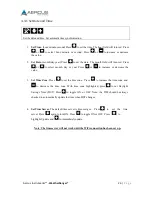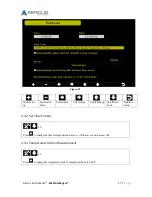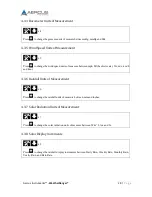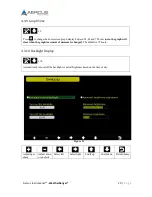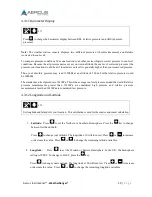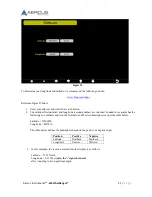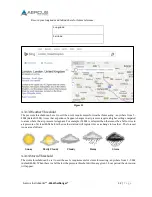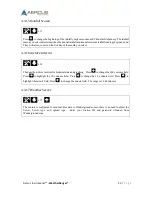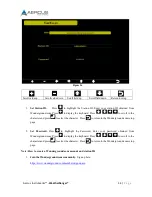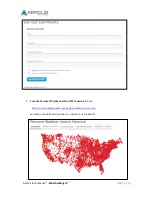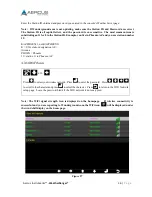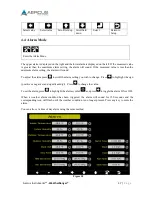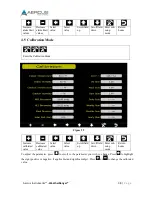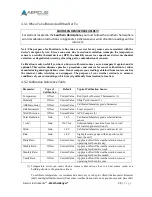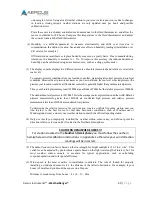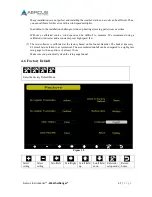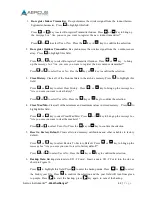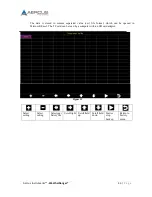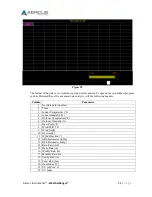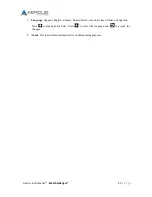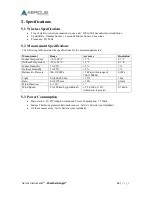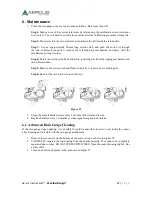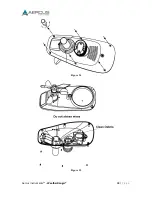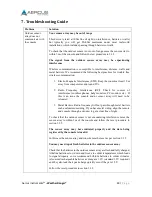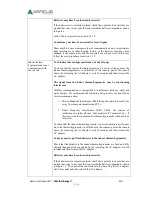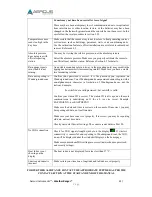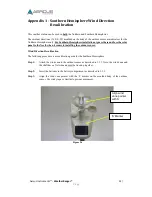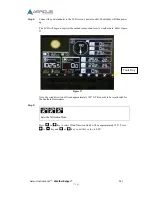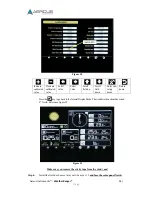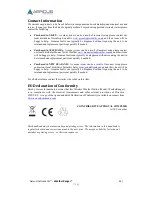
Aercus Instruments™
- WeatherRanger®
40 |
P a g e
own margin of error. Using a local weather station in your area is also a poor source due to changes
in location, timing (airport weather stations are only updated once per hour) and possible
calibration errors.
Place the sensor in a shaded, controlled environment next to the fluid thermometer, and allow the
sensor to stabilise for 48 hours. Compare this temperature to the fluid thermometer and adjust
the console to match the fluid thermometer.
(2)
Humidity is a difficult parameter to measure electronically and drifts over time due to
contamination. In addition, location has an adverse effect on humidity readings (installation over
dirt or lawn for example).
Official stations recalibrate or replace humidity sensors on a yearly basis. Due to manufacturing
tolerances, the humidity is accurate to ± 5%. To improve this accuracy, the indoor and outdoor
humidity can be calibrated using an accurate source, such as a sling psychrometer.
(3)
The display console displays two different pressures: absolute (measured) and relative (corrected to
sea-level).
To compare pressure conditions from one location to another, meteorologists correct pressure to sea-level
conditions. Because the air pressure decreases as you rise in altitude, the sea-level corrected pressure (the
pressure your location would be at if located at sea-level) is generally higher than your measured pressure.
Thus, your absolute pressure may read 1030hPa at an altitude of 200m, but the relative pressure is 1006hPa.
The standard sea-level pressure is 1013hPa. This is the average sea-level pressure around the world. Relative
pressure measurements greater than 1013hPa are considered high pressure and relative pressure
measurements less than 1013hPa are considered low pressure.
To determine the relative pressure for your location, locate an official reporting station near you
(the internet is the best source for real time barometer conditions, such as Weather.com or
Wunderground.com), and set your weather station to match the official reporting station.
(4)
Only use this if you improperly installed the weather station sensor array, and did not point the
direction reference to true north if located in the Northern Hemisphere.
SOUTHERN HEMISPHERE USERS!!!
For stations located in the
Southern Hemisphere
you must follow the southern
hemisphere wind recalibration instructions in Appendix 1 otherwise your wind direction
readings will be incorrect.
(5)
The default conversion factor based on the wavelength for bright sunlight is 126.7 lux / w/m
2
. This
variable can be adjusted by photovoltaic experts based on the light wavelength of interest, but for
most weather station owners, is accurate for typical applications, such as calculating
evapotransporation and solar panel efficiency.
(6)
Wind speed is the most sensitive to installation constraints. The rule of thumb for properly
installing a wind speed sensor is 4 x the distance of the tallest obstruction. For example, if your
house is 8m tall and you mount the sensor on a 2m pole:
Distance to mount away from house = 4 x (8 – 2) = 24m

